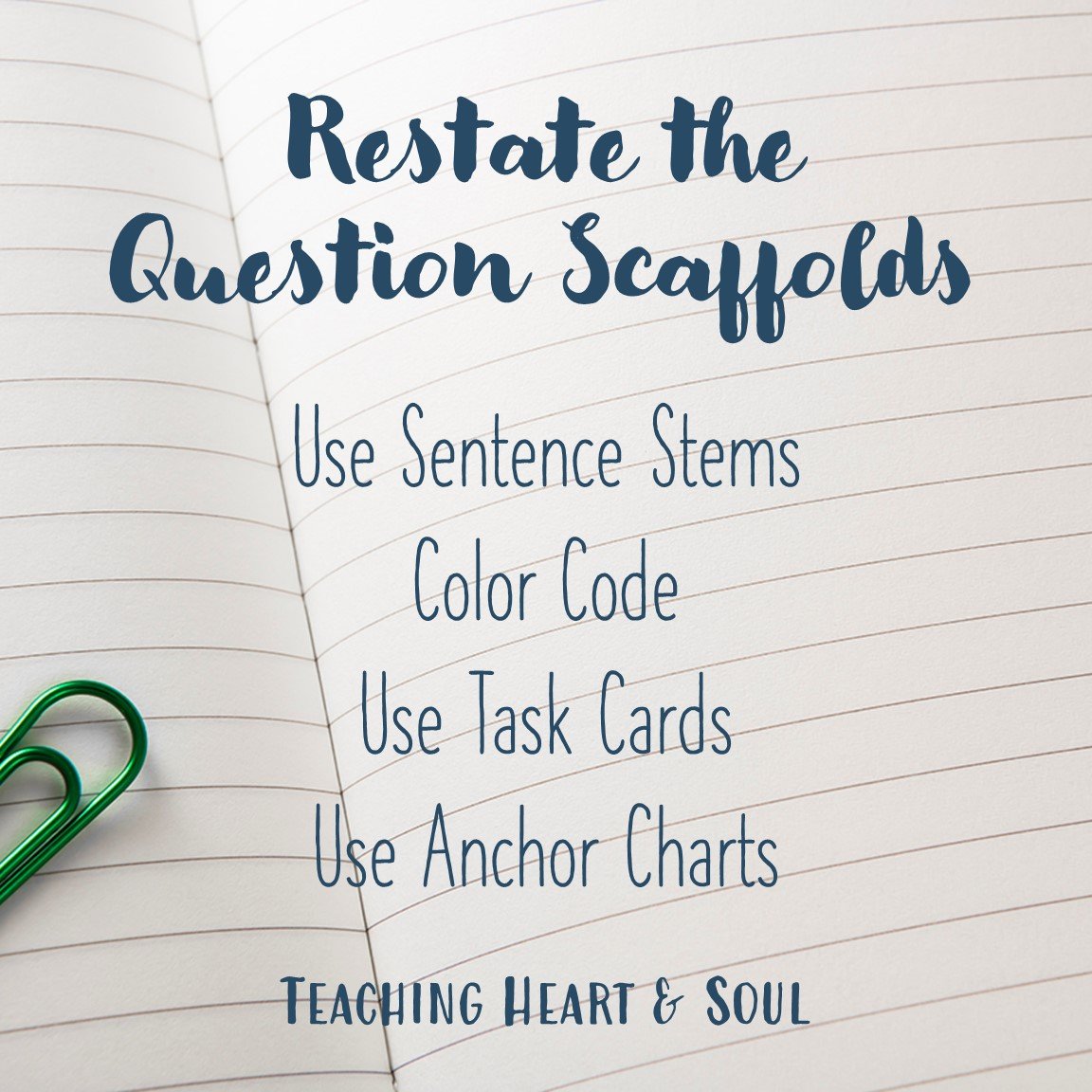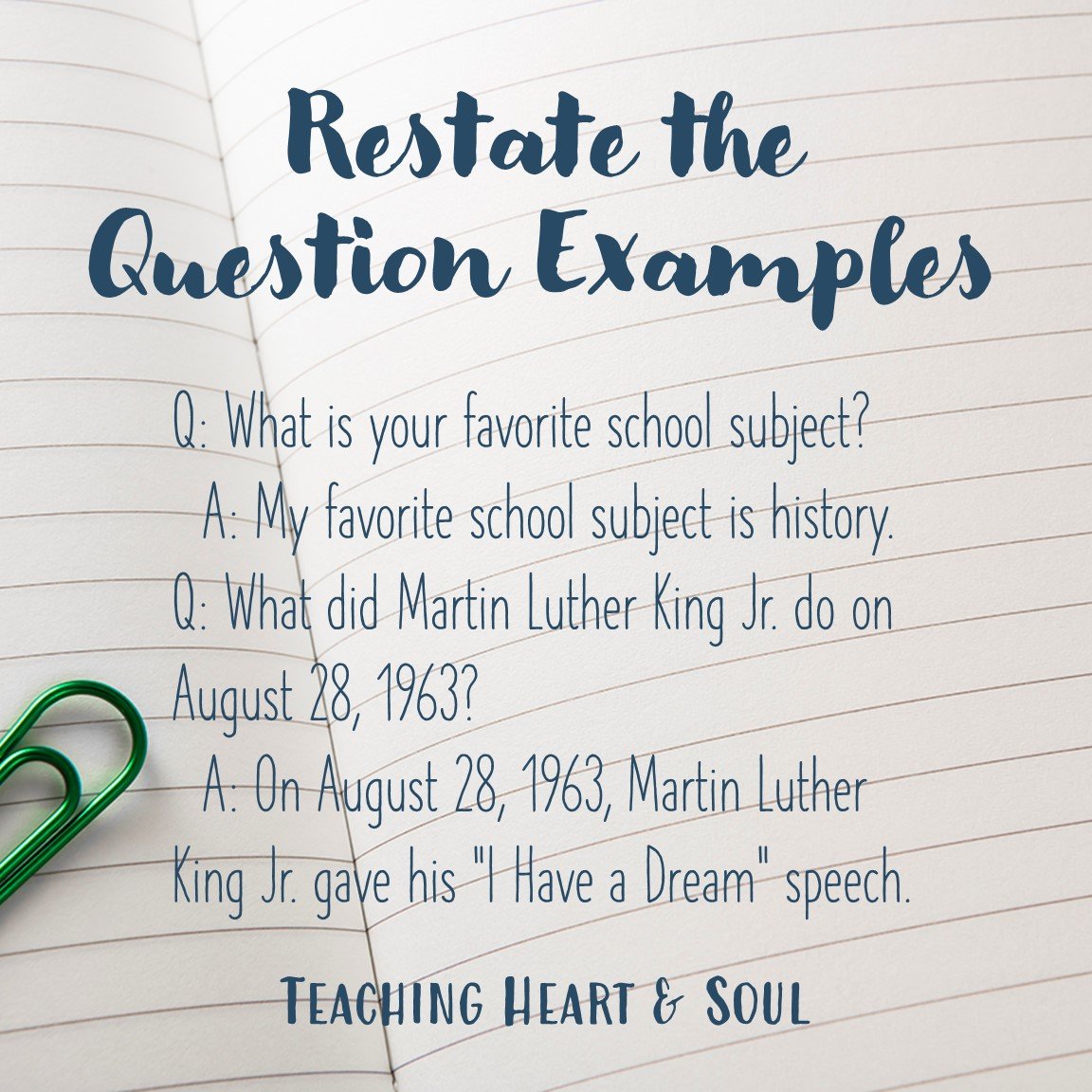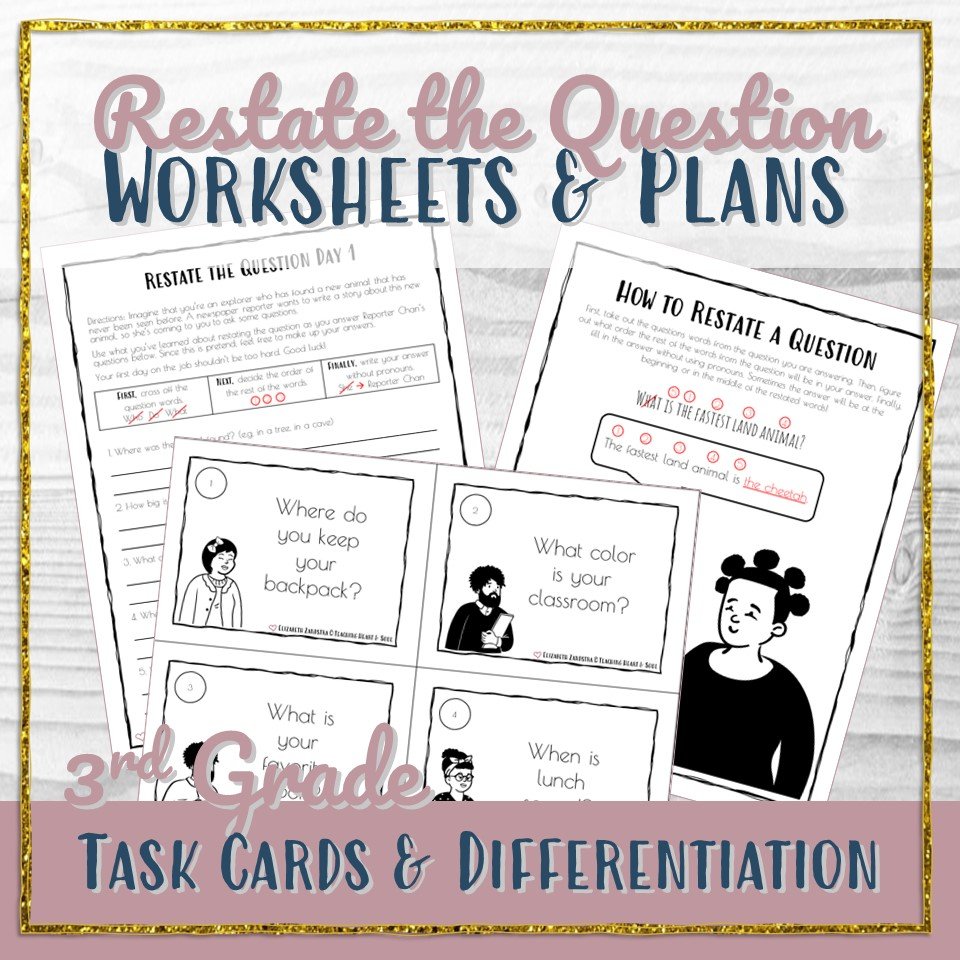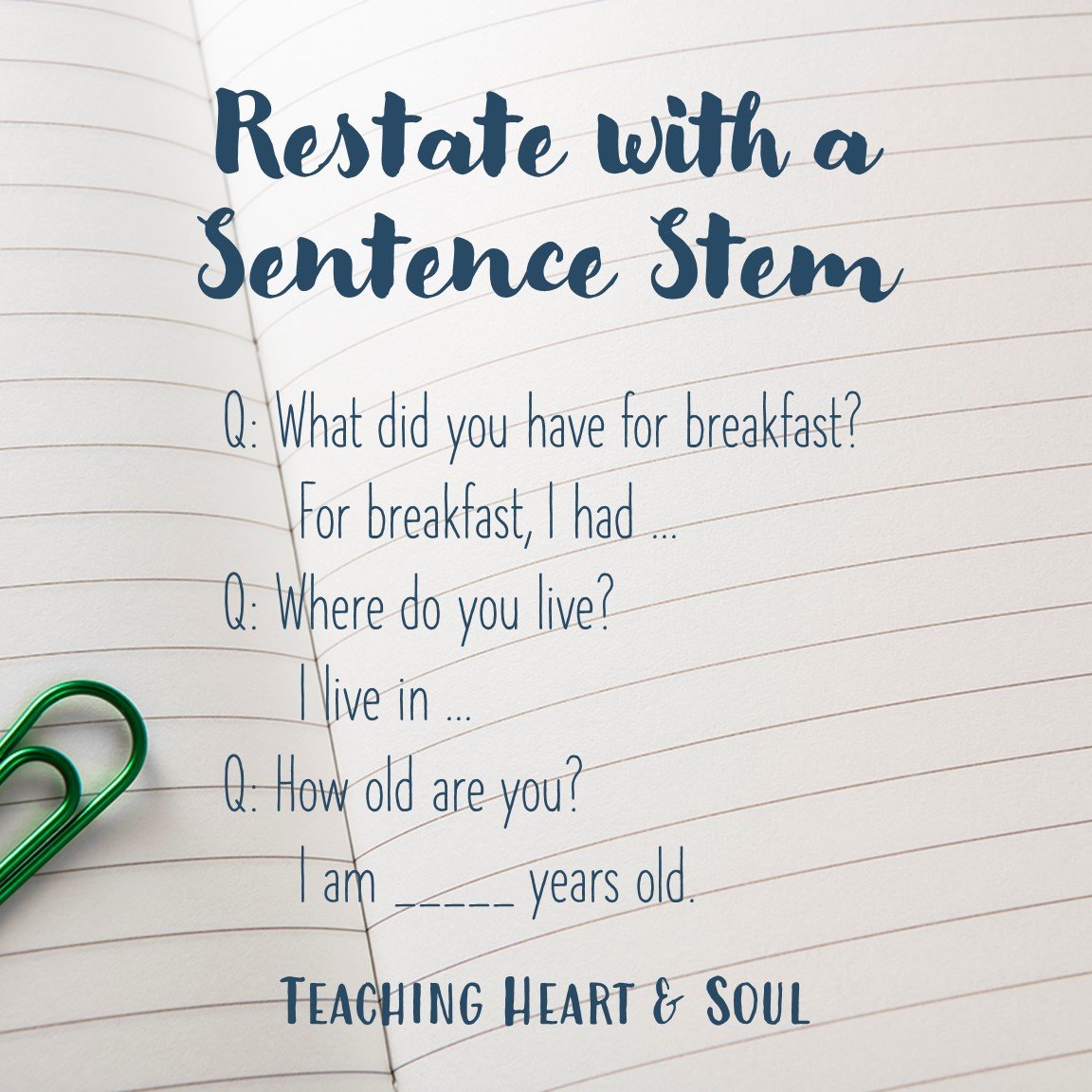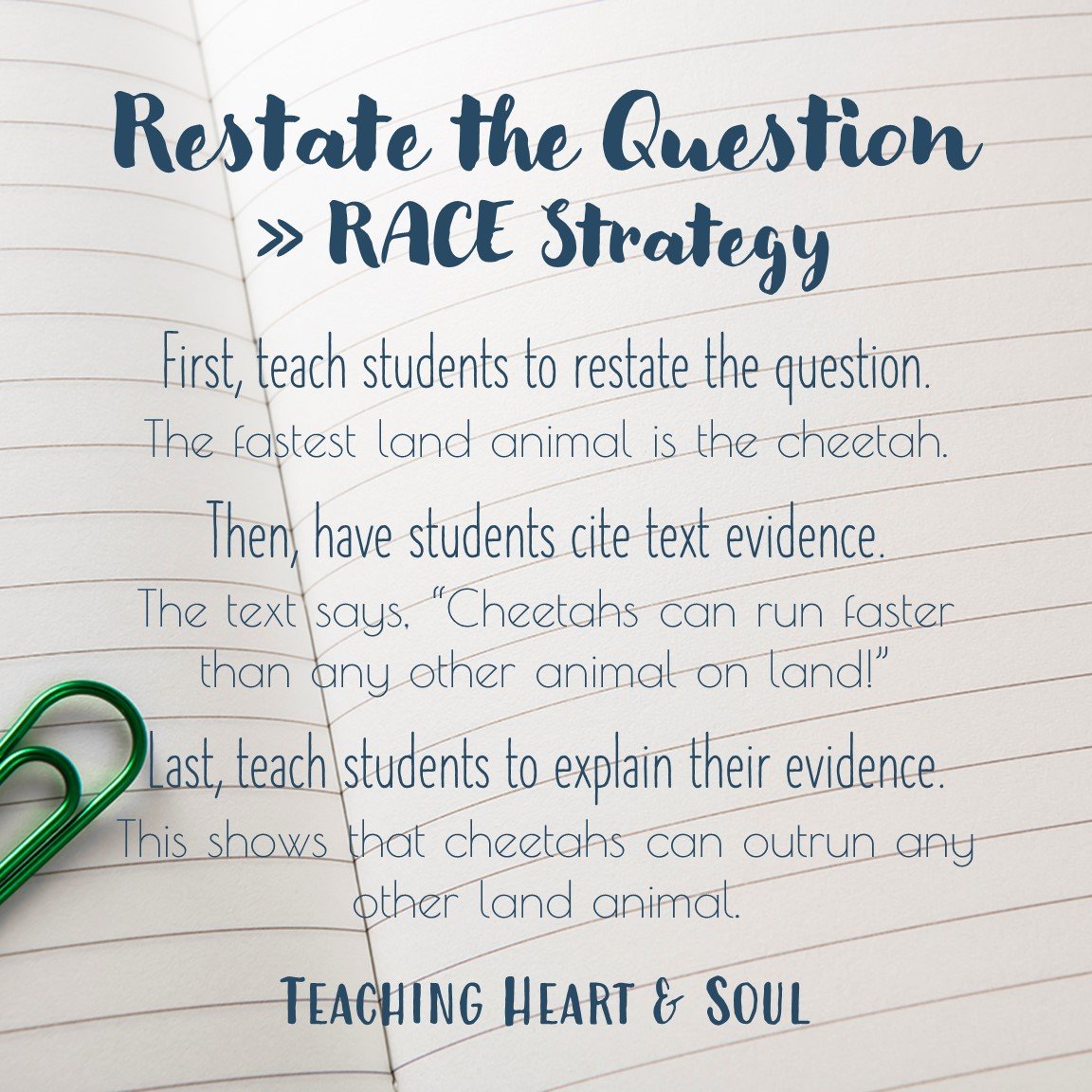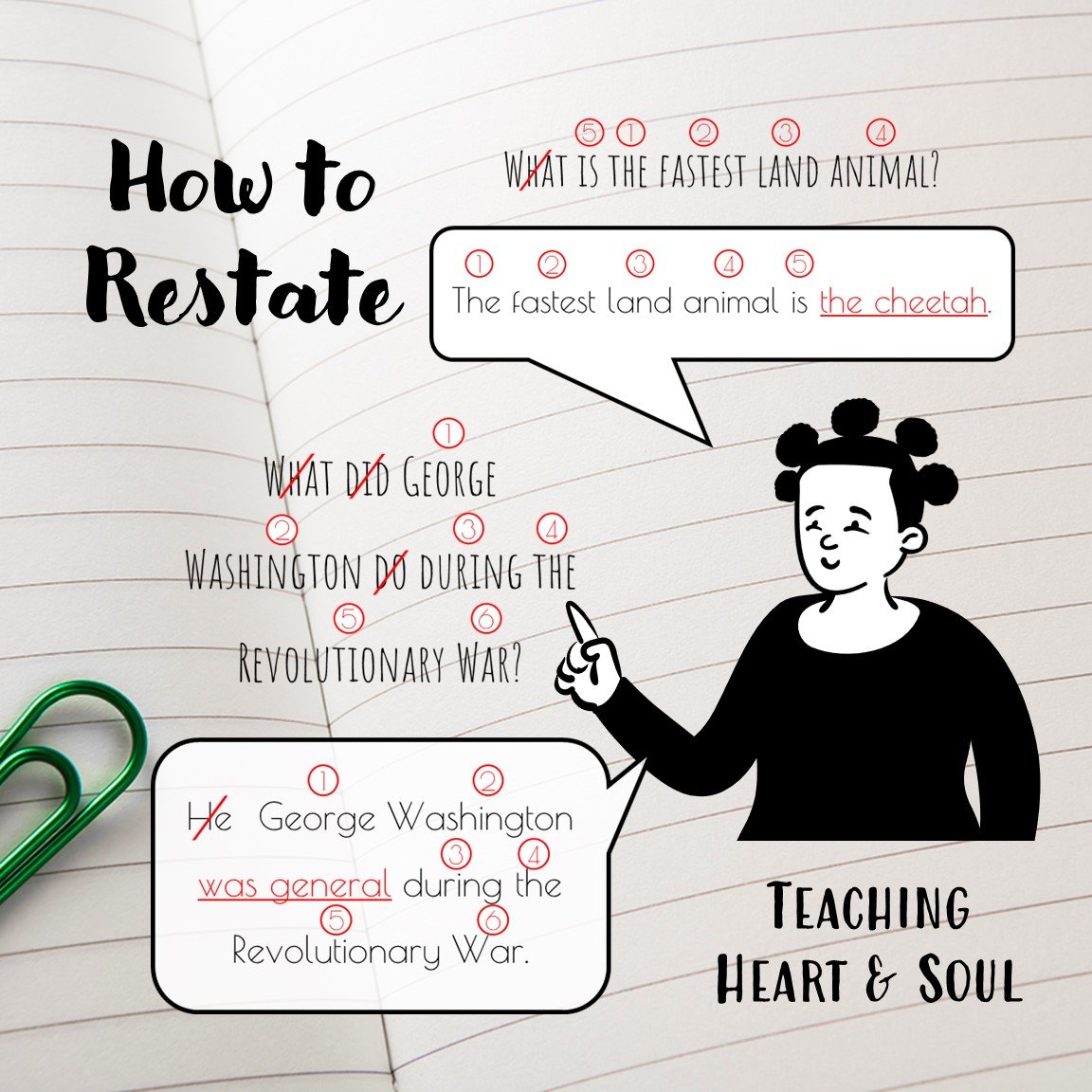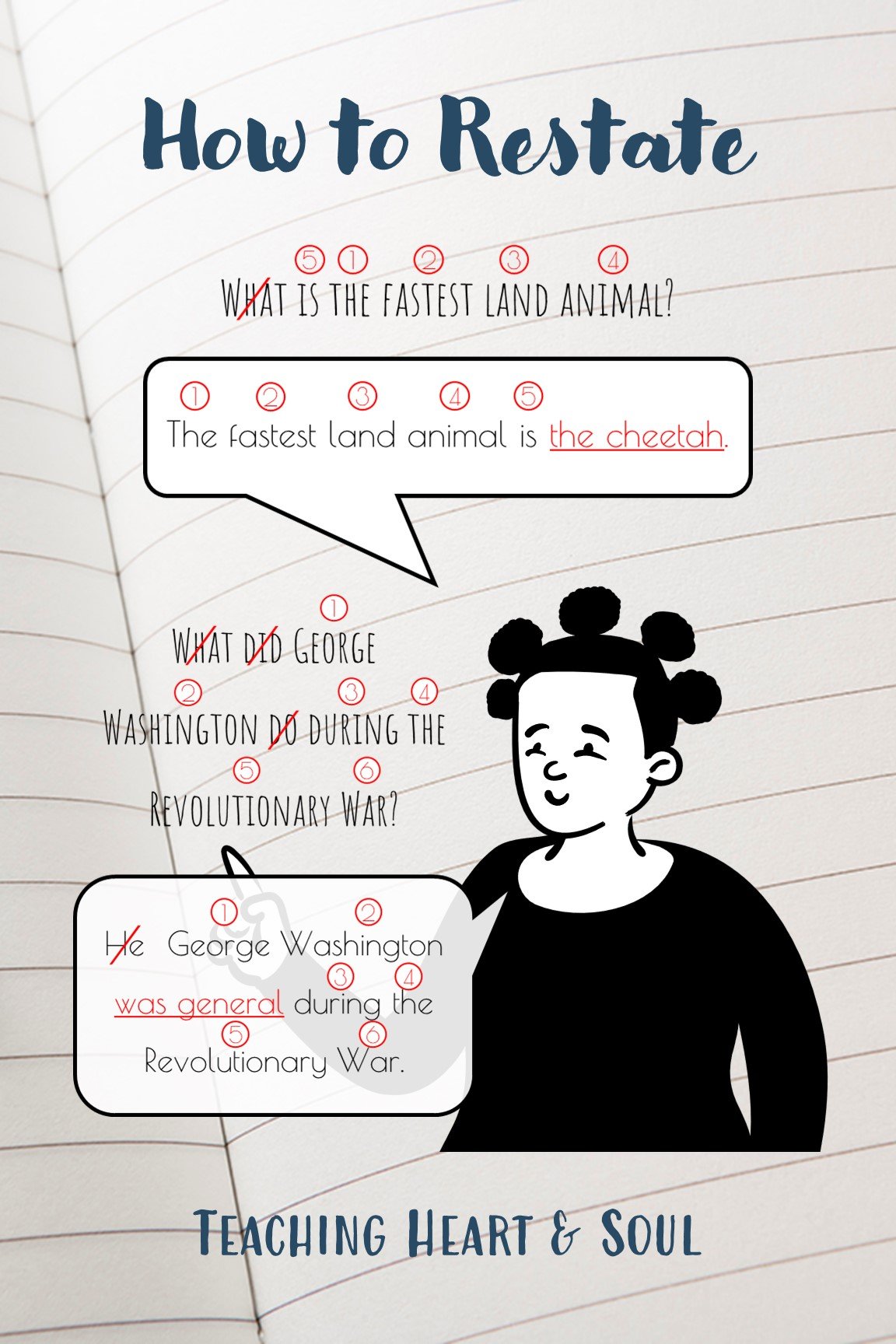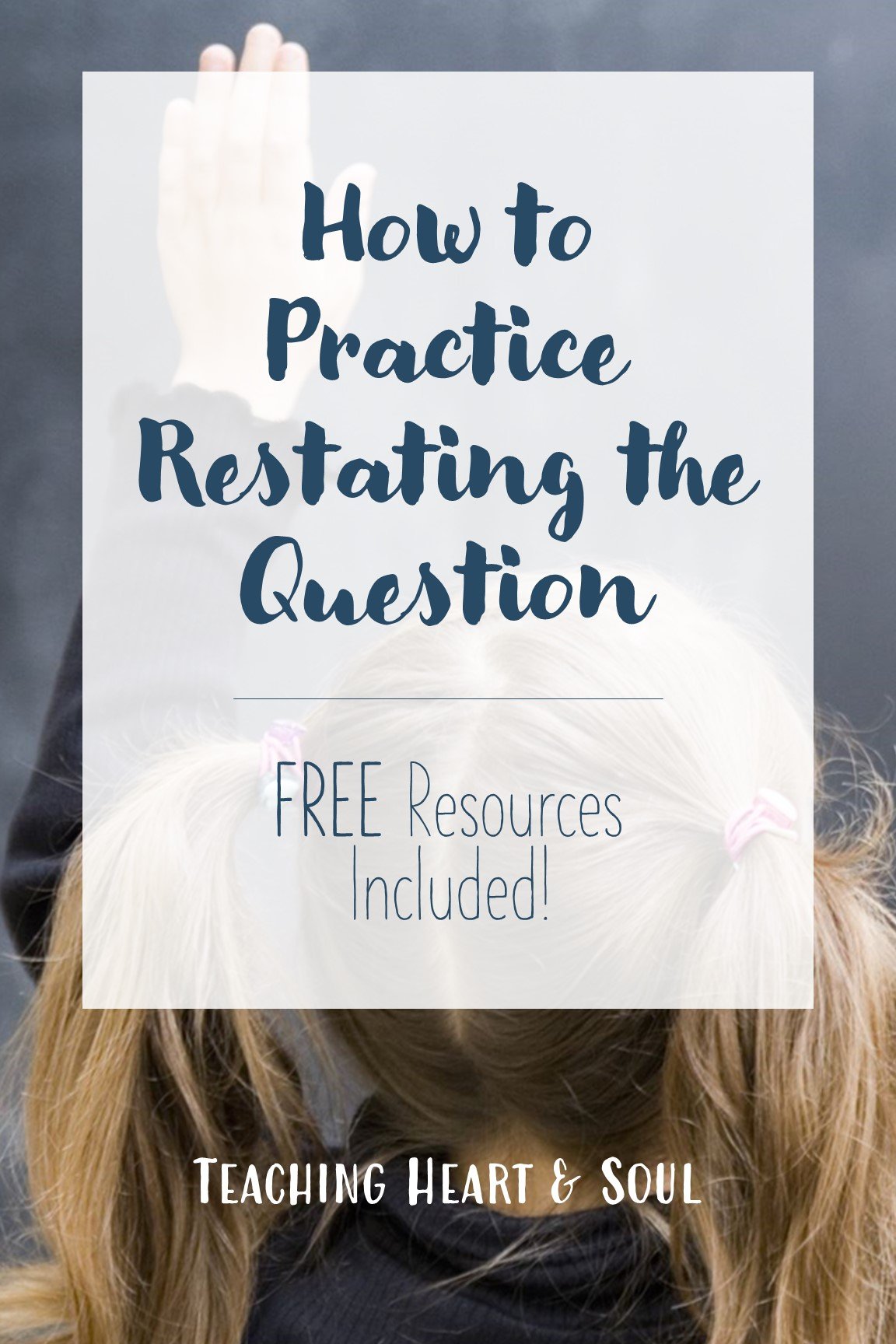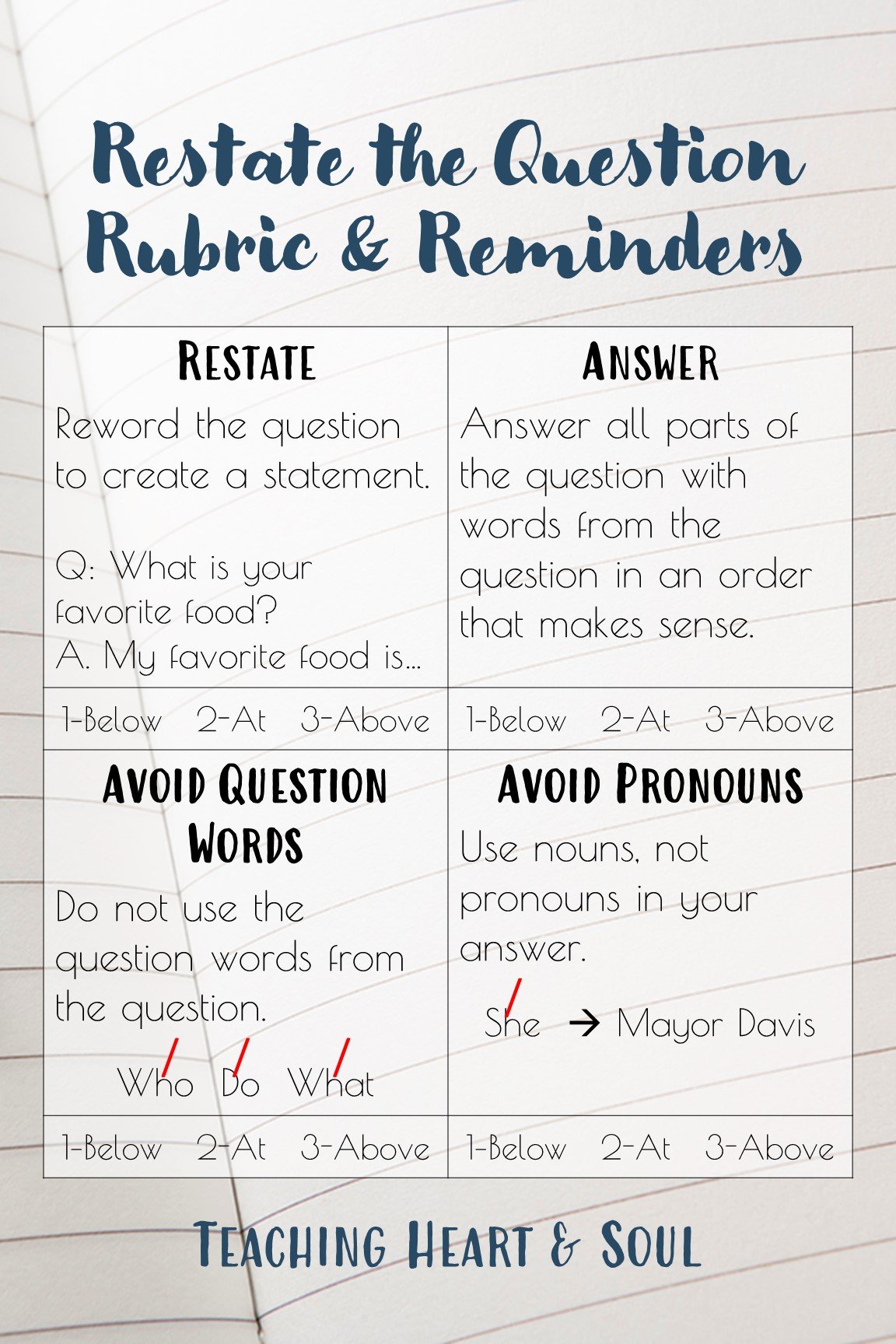How to Practice Restating the Question
As educators, we know how important it is for students to be able to restate the question in their own words before answering. This important skill not only helps them better understand the question but also improves their writing skills by requiring complete sentences.
This skill is particularly important for constructed response tasks and acts as test prep for state testing.
However, many students struggle with restating the question, particularly when it comes to answering constructed response questions. In this blog post, we will share some effective strategies for explicitly teaching students how to practice restating the question. Having steps and scaffolds to restate questions can reduce cognitive demand by making the information easier to understand.
Define "Restating the Question"
Before jumping into any strategies, it's important to make sure that your students understand what restating the question means. It is simply rephrasing the question in your own words so that you fully understand what it is asking and ensure you are using complete sentences.
Provide examples of restated questions, and explain the importance of restating the question.
Examples
Q: What is your favorite school subject?
A: My favorite school subject is history.
Q: What did Martin Luther King Jr. do on August 28, 1963?
A: On August 28, 1963, Martin Luther King Jr. gave his "I Have a Dream" speech.
Explicitly Teach Students to Restate the Question
A great way to explicitly teach any lesson is to use the I Do, We Do, You Do method.
This involves demonstrating how to restate the question, have students practice restating the question as a whole group with support, then asking students to practice on their own.
During this instruction, it is important to make sure students learn a few steps to restating the question.
Remove the Question Words
First, students should remove the question words from the question. They will not need these in their answer.
For example, in the question "Who is your best friend?" students will not need to use the question word "who", so they should remove it or cross it off.
Reorder the Remaining Words
Next, students will need to reorder the words that are remaining to create complete sentences for their answers.
For example, for the question "On Fridays, what do you do after school?" students might reorder the remaining words like this: "I __________ after school on Fridays."
Sometimes it will be very easy to put the remaining words in order. Other times, students can get confused. So, practice and modeling is key here.
This resource includes over 45 pages for a 5-day lesson plan. It includes worksheets, modeling pages, sample teaching script, differentiation strategies, task cards, and additional practice pages.
Avoid Using Pronouns
Something else students will need to do when restating the question is to avoid using pronouns. Part of the reason students are expected to restate the question is to make their answer clear on its own. If students use pronouns, their answer can still be confusing.
For example, compare the two answers below.
With a Pronoun: She taught me how to make soup.
Without a Pronoun: My grandma taught me how to make soup.
Do you see how much more informative the second example is?
If you’re looking for resources to help teach your students to restate questions, check out the resources below:
American Revolution-Themed Restate the Question
Aesop’s Fables to Restate the Question
Answer "Why?" with "Because"
Oftentimes, students should use the word "because" when responding to a question that asks "why?" Teaching students this trick can help them as they learn to restate the question.
For example, when students are asked "Why didn't Marcus make it to the play on time?" their answer should start out with "Marcus didn't make it to the play on time because..."
Sometimes "why?" questions are answered more easily without the word "because".
For example, the question "Why do you go to school?" might be answered "I go to school to learn," rather than "I go to school because I need to learn." Make sure kids don't get stuck trying to force the word "because" into their answer.
Use a Sentence Stem
To help students practice restating the question, provide them with a sentence stem that they can use as a guide. This is a strategy that should only be used when students are first learning to restate the question because using sentence stems to teach this strategy involves doing most of the word for the student.
However, using sentence stems does allow students to start recognizing what it sounds like to restate the question and allows them to concentrate just on finishing their complete sentence and adding their answer.
Some examples of sentence stems are:
Q: What is your favorite animal?
My favorite animal is ...
Q: What did you have for breakfast?
For breakfast, I had ...
Q: Where do you live?
I live in ...
Q: How old are you?
I am _____ years old.
Using sentence stems can help students feel more confident in their ability to restate the question, and provide them with a starting point for their response.
Color Code
To help bridge the gap between providing sentence stems and having students restate the question on their own, consider having students color code or highlight the words from the question that they will be using in their answer.
This can help students with the steps "remove question words" and "reorder the remaining words" from earlier.
As students cross off the question words and see the words that remain, they can highlight each word as they use it in their answer. This can help students keep track of which words they have already used.
If students are making mistakes because they are going too fast, you can help them slow down by having them highlight each word in a different color - once for each word in the question.
Practice Restating Questions
Students need to practice restating the question, and this can be done in a variety of ways.
One method is to provide students with simple questions and have them restate the question using a complete sentence. For example, if the question is "What color is the sky?" the student would restate it as "The sky is blue."
Once students are comfortable with simple questions, you can move on to more complex questions that are trickier to restate.
Eventually a student's answer should utilize the RACE strategy (Restate, Answer, Cite, Explain) for constructed responses and include text evidence and an explanation of their answer. It can also be used to support essay writing as kids learn to cite evidence in their research essays.
If you’re looking for resources to help your students practice restating questions, check out the resources below:
American Revolution-Themed Restate the Question
Aesop’s Fables to Restate the Question
Provide Feedback and Corrective Guidance
It's essential to provide feedback when students answer questions and write written responses.
When reviewing student work, look for incomplete sentences, lack of restated question, and other common errors. When checking students' work, make sure that you are giving corrective guidance and modeling how to properly restate the question. It's also helpful to provide a rubric that outlines the criteria for a well-written response.
Use Task Cards and Games
Using task cards and games can make practicing restating the question more fun for students.
Task cards can provide a variety of questions and prompts for students to practice with.
You can also use a "scoot" activity, where each child moves around the room to answer different questions at different stations.
Check out the resources below for help:
Restate the Question Task Cards
Incorporate Restating the Question into Morning Meeting
Restating the question can be incorporated into morning meetings as well. At the beginning of the day, provide students with a question and ask them to restate it in a complete sentence. This not only helps them practice restating the question but also provides them with an opportunity to share their thoughts and ideas with the whole group.
Use Anchor Charts
An anchor chart can be a great visual aid for students to refer to when practicing restating the question. Display an anchor chart in the classroom that outlines the steps for restating the question, including using key words, and provide examples of well-restated questions.
You can use a printable version of the anchor chart below by clicking on the download button.
Practice Restating Questions Throughout the School Year
It's important to practice restating the question consistently throughout the school year, as it is a skill that requires ongoing practice. Make sure to provide students with opportunities to practice restating questions in a variety of contexts, such as during morning meetings, small group discussions, and whole group instruction.
By consistently practicing restating questions and providing students with the necessary skills and strategies, teachers can help their students become confident writers who can eventually answer constructed response questions and cite text evidence to support their answers.
Conclusion
Teaching students to restate the question is an important skill that can be developed through explicit instruction, practice, and the use of sentence stems. By explicitly teaching students to restate the question using complete sentences and text evidence, teachers can help students develop strong writing skills and prepare them for constructed response tasks and state testing.
Teachers can provide a variety of strategies and activities to help students practice restating the question and develop their writing skills throughout the school year.
With patience, practice, and perseverance answering questions by restating the question in their answer, students can begin to write better answers to questions and increase their grades.
Are you tired of supplementing your curriculum?
This resource includes over 45 pages for a 5-day lesson plan. It includes the lesson plans, modeling pages, a sample teacher script, and student worksheets. Everything you need to teach the lessons.
It also includes differentiation strategies, including posters for reference, task cards, and additional practice pages.
Further Reading
If you’re interested in learning about how to teach students the RACE strategy, check out the blog posts below:

